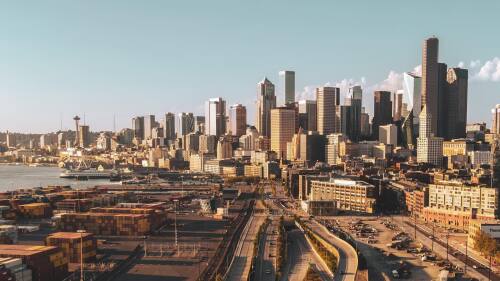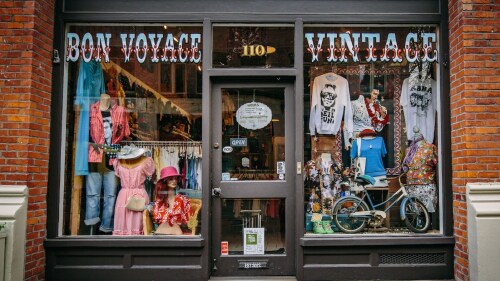Welcome to Beacon Food Forest (BFF) — an entirely volunteer-run forest of mostly edible plants in North Beacon Hill.
With seven acres of land (about three of which are currently planted), this community garden is one of the largest in the nation — previously once THE largest — and a thriving ecosystem of nut trees, berry bushes, herbs + medicinal plants.
There are roughly 50+ different sections of the garden organized by plant or functionality (i.e. the pollinator plot), so it’s pretty dang big. Let’s go foraging…
🍎 But wait, tell me more about food forests first.
No prob, Bob — a food forest is essentially what it sounds like — a giant community garden with a focus on edible plants. They’re typically polyculture, which just means there are a bunch of different types of plants in the same area — whereas a monoculture garden would be something like a cornfield (boooooring + not really great environmentally for a few reasons).
But while the focus is on food edible to humans, a good food forest feeds all of its attendants — including birds, bees, and squirrels. So while we may not like the taste of aronia berries, birds definitely do.
🍎 All for food, food for all
Yep, you got it — anyone can come by and grab an apple for munching, dill for their salmon, or hazelnuts for their cookies. Food forests are specifically designed to be large enough that there are treats for all.
Many volunteers donate their own plants, seeds, materials, and money to the nonprofit.
Fun fact: The BFF has its own seed library with labels written in five languages where folks can donate or take their own pods home.
🍎 New growth
The Beacon Food Forest’s first trees were planted in 2012 after public meetings, test plots, and several thousands of dollars in support funds.
Now, leaders are shifting their sights a bit and intentionally creating spaces for diverse groups of farmers and farming techniques. Plots like the BIPOC Community Garden and the Native Guild are built to do things like:
- Return land to Indigenous communities to tend it the way it has been historically
- Give opportunities for culturally-diverse groups to use methods passed down through their heritage
- Invite new volunteers who may have otherwise felt excluded from gardening groups
🍎 How do I get to planting?
The best way to get started as a volunteer is to check out one of BFF’s work parties held every third Saturday of the month at the S. Dakota St. farm. There, you can get your hands dirty and see if there’s a committee you might be interested in. The next work party is coming up on Sat., May 21 from 10 a.m.-2 p.m. Tools and materials are provided.
If you can’t make it, but still want to volunteer, fill out an interest form on the BFF website.












